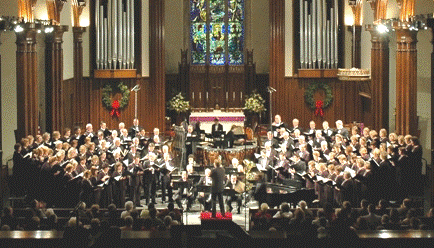Prize winners from the Young Concert Artists have been a regular feature of the Classical Concert Series over the course of its thirty-one seasons. The series is now under the management of the Moore County Arts Council. A new feature was tried out for this final concert of the season. Executive director Chris Dunn explained a subscriber had suggested one of the series’ four concerts ought to be devoted to one composer. The choices were Mozart or Beethoven. The two YCA artists, violinist Paul Huang and pianist Louis Schwizgebel shared the needed Beethoven repertoire but had never played together despite their being both students at the Juilliard School of Music.
Scholars often divide the works of Ludwig van Beethoven (1770-1827) into three creative periods: Early (c. 1794 to 1800), Second or Middle (1800-15), and Third or Late (c. 1815-27). This concert featured three works from the transition at the beginning of the Middle period. Two violin sonatas sandwiched a less frequently played piano sonata in a program that gave both artists plenty of scope to strut their stuff.
It was traditional in the late seventeenth and eighteenth centuries for composers to dedicate their compositions to some famous aristocrat in hopes of receiving gifts, money, or further commissions. According to Melvin Berger, in Guide to Sonatas, the three violin sonatas of Opus 30 were composed c. 1801-02 and were dedicated to Czar Alexander I of Russia in 1802 but the composer only got paid for it in 1815 when the czar attended the Congress of Vienna. Mozart began the process of freeing the violin sonata from its baroque model in which the keyboard was the centerpiece as the violin doubled the right hand’s part while adding ornamentation or harmonization. Beethoven’s titles reflect this earlier tradition but the violin part was already showing growing independence.
The last of the Op. 30 set, Sonata No. 8 in G for piano and violin, is in the traditional three movements and has plenty of energy and intensity as themes are tossed back and forth between the instruments. A perky Allegro assai is followed by a gorgeous Minuet and it ends with a perpetual motion Allegro vivace, a virtual whirlwind of fast-paced notes. Huang and Schwizgebel played the sonata superbly. Huang seemed to have an endless supply of energy, and he produced a sweet, warm tone that reminded me of my Sony recording of Zino Francescatti.
Huang’s intonation was precise, his fastest passages were cleanly articulated, and he had a wide palette of expressive dynamics from delicate pp to militant ff. Schwizgebel played with the Steinway’s lid fully raised but scaled his dynamics so as to never cover the violin’s line. His use of color and his phrasing were marvelous, and he perfectly captured the barely contained stormy energy of Beethoven.
Schwizgebel’s solo selection was Piano Sonata No. 13 in E-flat, the lesser known of the two works of Opus 27. Piano Sonata No. 14 in C-sharp minor, “Moonlight” is frequently programmed and well-known. Both sonatas are entitled “Sonata quasi una fantasia” and mark a major break with the composer’s previous works in the form. Both begin slowly and ought to be played without break or with only the briefest pause between movements. No. 13 is in four movements, the first two in ternary form, a third, brief slow movement leads directly to a powerfully extended finale that surges with considerable passion. This was the beginning of the composer’s boosting the importance and length of last movements. Schwizgebel gave a richly satisfying performance of considerable intensity and tonal beauty. His phrasing was stylish as were his choices of expressive dynamics. The fastest passages were never smudged.
Huang and Schwizgebel played Sonata No. 7 in C minor for piano and violin, Op. 30/2 after intermission. It has plenty of Sturm und Drang (Storm and Drive) and it makes considerable technical demands upon the players. It contains some of the composer’s most deeply felt emotions and abounds in the wealth of its melodic invention. Berger says “it starts with the whip-crack opening and continues, almost without respite, to the end” of the first movement. A singing, slow Adagio movement is followed by a Scherzo that “fairly crackles with rhythmic vitality.” The finale continues the high level. All the virtues of both players described in the opening performance of Op. 30/3 were present in spades for this fiery work. Committed and well-considered interpretations were combined with considerable technical polish.
Strum und Drang was not just in the Beethoven sonata and the musicians’ playing of it. The very heavens of the Sandhills shook with a thunderstorm that would have joyed a Romantic of past centuries! Prolonged and spontaneous applause from the packed Sunrise Theatre audience was rewarded with a beautifully balanced performance of the Sonatensatz (Scherzo from the F.A.E. Sonata), WoO2 by Brahms. Background to this joint composition by Brahms, Dietrich, and Schumann is in my reviews of Julian Schwarz and Leila Josefowicz.











